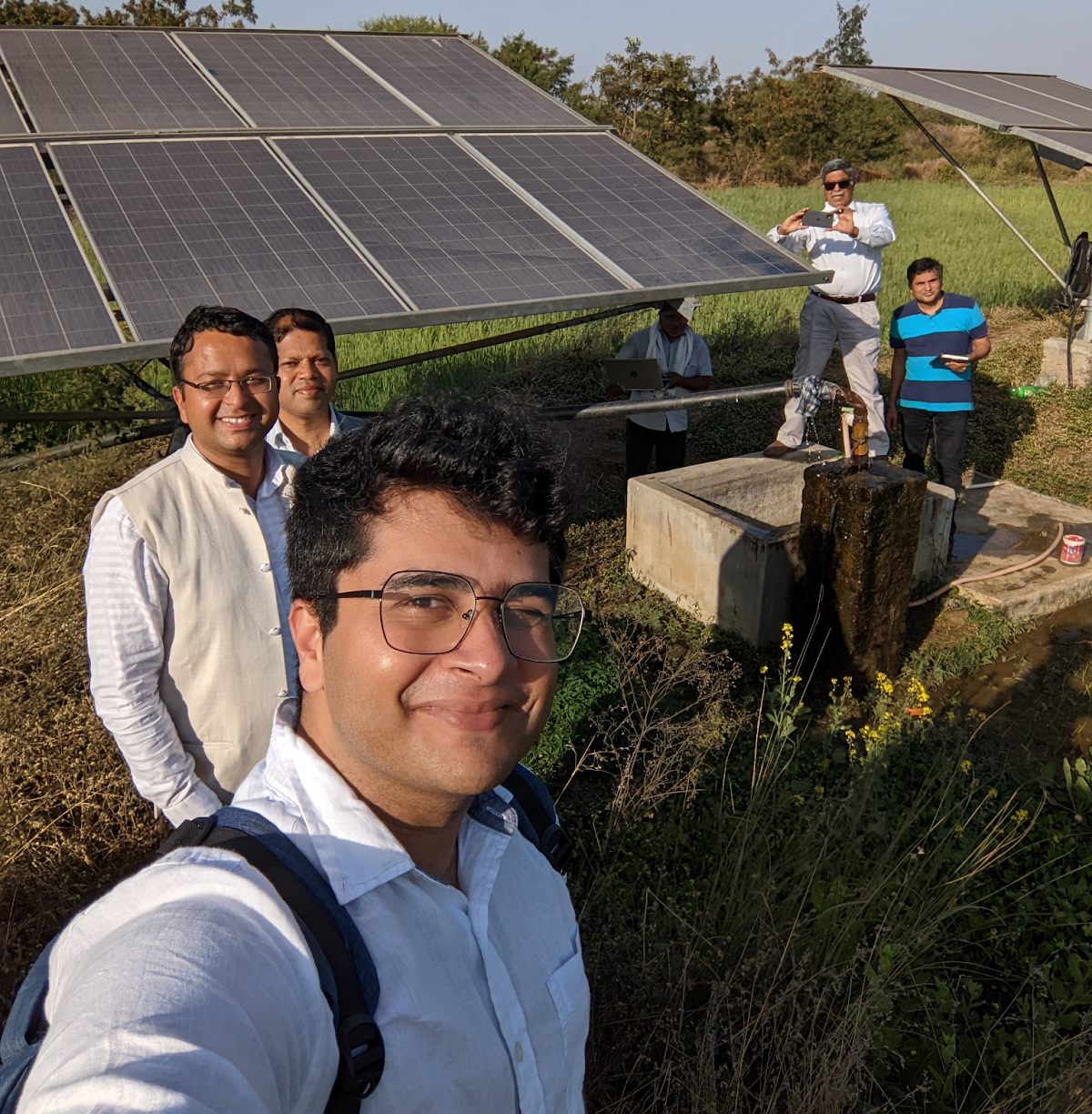
With roughly one-sixth of the world’s population, India’s increasing needs for food, water and energy are crucial for its sustainable development. Recent CCEE graduate student Aditya Keskar (Ph.D. 2023) responded to this pressing challenge by dedicating his doctoral research to the betterment of his homeland. He focused on solar water pumps, which offer irrigation to farms while avoiding the greenhouse gas emissions and air pollution caused by diesel pumps.
This technology uses standalone solar photovoltaic panels coupled with water pumps. India’s ambition to deploy nearly three million solar water pumps would greatly impact its food, energy, and water systems, making successful implementation crucial. With his advisor, CCEE Associate Professor Jeremiah Johnson, and partners at the National Institute of Technology, Raipur, he secured funding from the Center for Strategic and International Studies, University of Nebraska Omaha, and the U.S. State Department to evaluate the performance and environmental advantages of deploying distributed solar water pumps, tackling this multifaceted challenge.
To offer new insights into the deployment of these pumps to date, the binational research team conducted farmer surveys and collected extensive operational data across Chhattisgarh, a central Indian state. Farmers reported increased revenues and extended growing seasons as a result of their solar water pumping systems. However, the study highlighted significant untapped potential within these systems. An estimated 300 to 400 kilowatt-hours per month of solar energy per pumping system remained unused, representing as much as 95% of potential generation. The excess, unused solar energy can have alternative uses beyond pumping, indicating a pathway for harnessing solar energy more effectively for non-pumping purposes.
The study also found a wide range of usage rates for the pumps. When assessing their environmental benefits, highly utilized solar pumps reduced overall greenhouse gas emissions by 93% compared to diesel alternatives. Pumping systems with minimal usage, however, did not realize those environmental benefits. This study highlights important opportunities for India’s sustainable development, emphasizing the key role of innovative technologies like solar water pumps in meeting the escalating demands for food, water and energy while advancing environmental sustainability.
“We had an excellent partnership with the team at the National Institute of Technology, Raipur. The collaboration required significant effort in terms of collecting survey responses, gathering pump operation data, grant logistics, and working closely across different time zones,” Keskar said. “It was challenging, but ultimately a very rewarding and educational experience. We were also guided by key policymakers in Chhattisgarh, who helped us tie the research to on-the-ground challenges.”
The project team reflected on the challenges and immense benefits they experienced working in a binational team at a panel Institute of International Education’s workshop on Best Practices in U.S. India Higher Education Collaborations. The research findings were published as part of the Environmental Science & Technology special issue “Accelerating Environmental Research to Achieve Sustainable Development Goals.”
